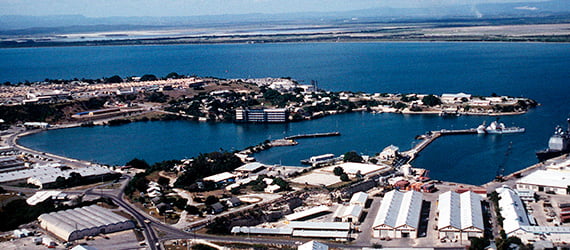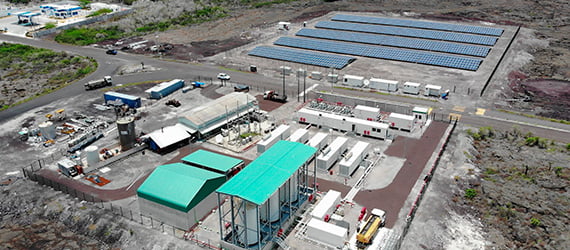Efficient floating power
The combined cycle power plant has arrived in Santo Domingo.
Bringing electricity to where it’s needed
While floating power stations have been around since the mid-90s, reinventing them with today’s efficient, low environmental impact technologies is a first. SeaFloat does just that. And it’s proving very popular.
Hamed Hossain explains the recent resurgence in demand for floating power plants: “We are putting highly efficient combined cycle power plants on a barge. So far, these have only been on land. And we can include a battery on the barge as well, that’s also new. In this way, we can always ensure maximum grid efficiency. Additionally we are able to provide the entire value chain installed on a fully integrated vessel with LNG storage, regasification and power unit.”
Meeting a growing city’s power needs
The Dominican Republic capital of Santo Domingo sits at the mouth of the Ozama River. It is one of the Caribbean’s oldest cities, and with 3.3 million inhabitants, it’s also the most populous. Over the past decade alone, this burgeoning, bustling melting pot has added around 700,000 inhabitants.
With 1,600km of sandy coastline, national parks and dramatic mountain ranges, the Dominican Republic is the most popular tourist destination in the Caribbean. Santo Domingo, however, is also among the world’s cities that are most at risk of rising sea levels caused by climate change. By 2050, parts of the city could be under water. A water-based power plant could be one very valuable asset.
Estrella del Mar III offers a host of benefits to the people of lively Santo Domingo, with a more reliable energy supply, reduced LCoE (levelized cost of electricity), and less noise—residential housing is close to the power plant. Hamed explains: “It’s more ecological and economical, and combined cycle power plants are not as maintenance-intensive as other plants, so downtimes are reduced.”
Pushing on, despite a pandemic
“Our construction team faced a lot of challenges,” Hamed says. “There were many restrictions concerning the local job market.
Dormitories were closed for many months, and there were entry restrictions in Singapore, which affected our specialists and suppliers from around the world. Despite this, we still managed to pull together to make this project happen.”
Jakob Tyroller, General Project Manager of the Estrella del Mar III, says work continued despite the restrictions: “It wasn’t possible to fly to Singapore to have face-to-face meetings. I compensated with a lot of calls and live meetings. Many of them were early in the morning or late in the evening. We all had to be flexible. Clear communication between the teams is important, especially if you can’t meet in person. Plus, not flying around the world once a month was certainly appreciated by my family!”
“The SeaFloat Estrella del Mar III will help meet Santo Domingo’s increasing demand for electricity and can support in case of power cuts—all without having to acquire precious land.”
Omar Laredo, Sales Director CA & Caribbean
Related Projects
Within the objective of Ecuador‘s “Zero Fossil Fuel Initiative for the Galapagos Islands” a new hybrid power generation system was installed in Isabela island located in the Galapagos Archipelago. It is successfully in operation since October 2018.
Within the objective of Ecuador‘s “Zero Fossil Fuel Initiative for the Galapagos Islands” a new hybrid power generation system was installed in Isabela island located in the Galapagos Archipelago. It is successfully in operation since October 2018.



